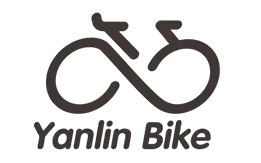
- Afrikaans
- Albanian
- Amharic
- Arabic
- Armenian
- Azerbaijani
- Basque
- Belarusian
- Bengali
- Bosnian
- Bulgarian
- Catalan
- Cebuano
- Corsican
- Croatian
- Czech
- Danish
- Dutch
- English
- Esperanto
- Estonian
- Finnish
- French
- Frisian
- Galician
- Georgian
- German
- Greek
- Gujarati
- Haitian Creole
- hausa
- hawaiian
- Hebrew
- Hindi
- Miao
- Hungarian
- Icelandic
- igbo
- Indonesian
- irish
- Italian
- Japanese
- Javanese
- Kannada
- kazakh
- Khmer
- Rwandese
- Korean
- Kurdish
- Kyrgyz
- Lao
- Latin
- Latvian
- Lithuanian
- Luxembourgish
- Macedonian
- Malgashi
- Malay
- Malayalam
- Maltese
- Maori
- Marathi
- Mongolian
- Myanmar
- Nepali
- Norwegian
- Norwegian
- Occitan
- Pashto
- Persian
- Polish
- Portuguese
- Punjabi
- Romanian
- Russian
- Samoan
- Scottish Gaelic
- Serbian
- Sesotho
- Shona
- Sindhi
- Sinhala
- Slovak
- Slovenian
- Somali
- Spanish
- Sundanese
- Swahili
- Swedish
- Tagalog
- Tajik
- Tamil
- Tatar
- Telugu
- Thai
- Turkish
- Turkmen
- Ukrainian
- Urdu
- Uighur
- Uzbek
- Vietnamese
- Welsh
- Bantu
- Yiddish
- Yoruba
- Zulu
Sep . 28, 2024 16:08 Back to list
how to set derailleur on mountain bike
How to Set Up Your Derailleur on a Mountain Bike
Setting up the derailleur on your mountain bike is crucial for smooth shifting and optimal performance on the trail. A well-adjusted derailleur ensures that you can transition seamlessly between gears, helping you tackle varying terrains without any hiccups. Here’s a step-by-step guide on how to set up your derailleur effectively.
1. Gather Your Tools
Before you start, ensure you have the necessary tools ready. Typically, you’ll need a screwdriver (Phillips and flathead), a 5mm Allen wrench, and possibly a chain tool, depending on your setup. Having a bike stand can also make the process easier.
2. Inspect the Derailleur
Begin by inspecting your derailleur for any signs of damage or wear. Check the alignment; the derailleur should be straight and not bent. Ensure that the hanger (the part that attaches the derailleur to the frame) is also straight. If it’s misaligned, you may need to adjust or replace the hanger.
3. Adjust the Limit Screws
The limit screws control how far the derailleur can move in both the high (smallest cog) and low (largest cog) positions. Typically, there are two screws marked 'H' and 'L'.
- High Limit (H) Shift to the smallest cog. Adjust the 'H' screw so that the derailleur is positioned just above the cog, ensuring the chain doesn’t drop off the outside. - Low Limit (L) Shift to the largest cog. Adjust the 'L' screw to ensure the derailleur doesn’t push the chain off the largest cog. The derailleur should be properly aligned with the cog.
how to set derailleur on mountain bike

Once the limit screws are set, it’s time to adjust the cable tension. This step is critical for allowing the derailleur to shift correctly between gears. Shift to the middle gear and use the barrel adjuster (usually located on the shifter or the derailleur) to fine-tune the tension. If shifting is sluggish, increase tension; if it’s hesitant, reduce it.
5. Test the Shifting
Now it’s time to test your adjustments. Shift through all the gears while pedaling to ensure a smooth transition. Pay attention to any skipped gears or hesitation. If the chain struggles to shift, you may need to return to the cable tension adjustment and tweak it slightly.
6. Final Fine-Tuning
After testing, double-check the limit screws and the alignment of the derailleur. Make small adjustments as necessary. Ensure that the chain is properly lubricated and the cassette and chainrings are clean; this will enhance overall performance.
7. Regular Maintenance
Remember that regular maintenance is essential. Over time, cables stretch, and components can wear down, so periodic checks and adjustments will keep your derailleur functioning optimally.
In summary, setting up your derailleur properly can make a significant difference in your mountain biking experience. By following these steps, you can enjoy smoother gear transitions and improved riding performance on the trails. Happy riding!
-
The Ultimate Kids' Four-Wheeler Experience
NewsJul.09,2025
-
The Ultimate Guide to Mountain Bikes: Gear Up for Your Ride
NewsJul.09,2025
-
The New Age of Cycling: Electric Bikes for Every Rider
NewsJul.09,2025
-
The Best Kids Bicycles: Ride in Style and Safety
NewsJul.09,2025
-
The Best 3-Wheel Scooters for Kids: Fun, Safety, and Adventure
NewsJul.09,2025
-
Revolutionize Your Ride: Affordable Electric Bikes
NewsJul.09,2025
-
Finding the Perfect Mountain Bike for Every Rider
NewsJul.09,2025



